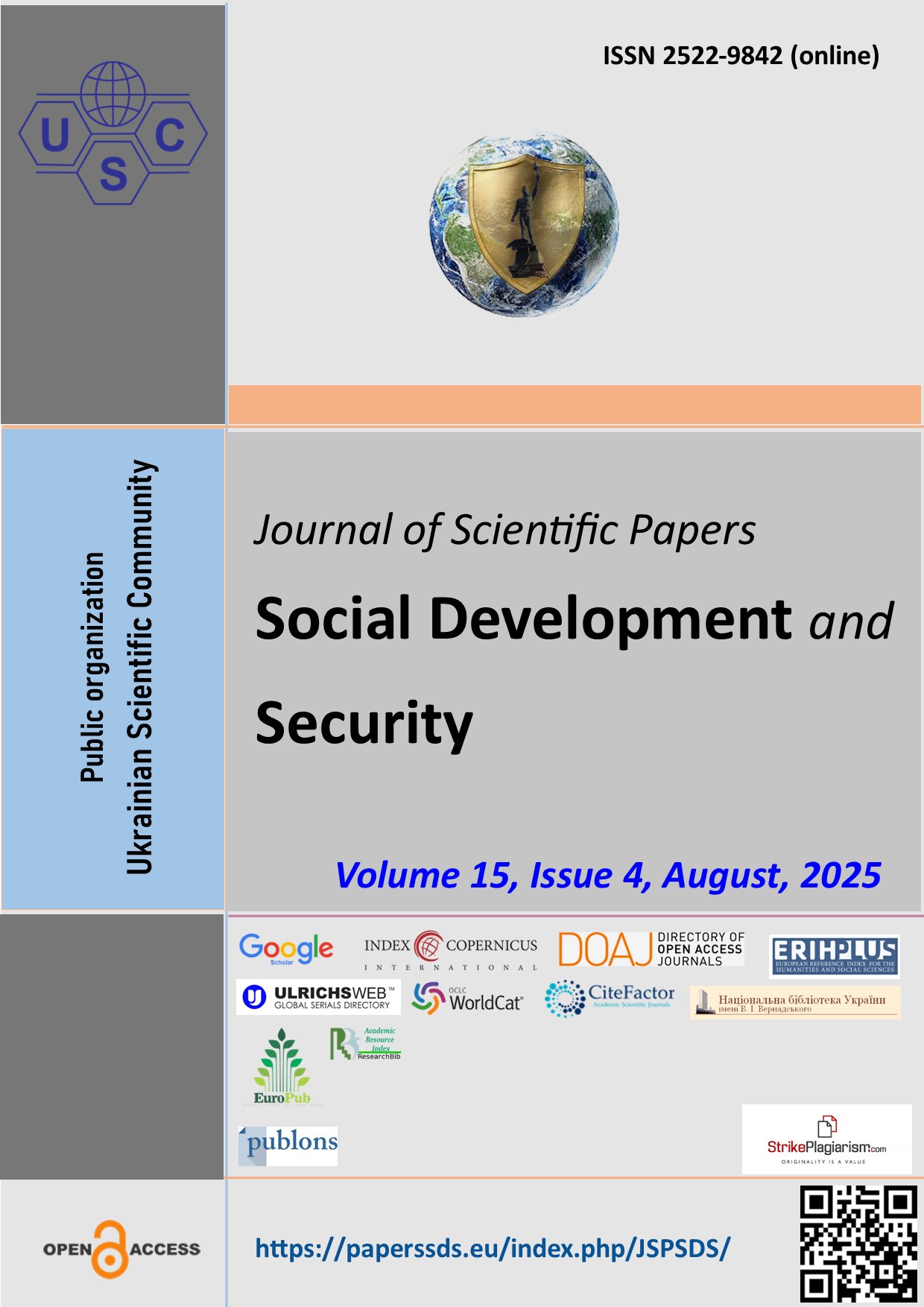Storytelling in the Defense Sector
Abstract
Purpose. To identify the communicative and informational-psychological aspects of storytelling as a tool of influence in the military-industrial sphere and national security.
Findings. A general definition of storytelling, its functions, and role in forming an emotional connection between the audience and the communicator are provided. Particular attention is paid to the analysis of defense activities in the context of modern information warfare, where storytelling is used as an effective means of psychological influence, mobilization of support, and formation of a positive image of military structures. Current trends in the use of storytelling in military communications, particularly in strategic communications, information campaigns, and influence operations, are outlined. Typical themes of military narratives are explored: heroism, sacrifice, brotherhood, struggle for independence, and defense of values. The features of military storytelling are identified, such as emotional intensity, appeal to national identity, visual and audio expressiveness, and adaptation to various platforms (social networks, video, blogs, documentary formats, etc.).
Originality. The study presents in a systematized storytelling as a comprehensive communication tool in the defense sector, combining psychological, marketing, and strategic dimensions. It proposes a structured mechanism for using storytelling to influence public opinion, government decisions, and the positioning of defense industry products in the international environment. The main steps for the practical implementation of storytelling in the strategies of Ukrainian defense sector companies are substantiated.
Downloads
References
Blas, N. (2023). Beyond storytelling. Æther: A Journal of Strategic Airpower & Spacepower, 2(1), 46-57. Available from : https://www.airuniversity.af.edu/Portals/10/AEtherJournal/Journals/Volume-2_Number-1/Blas-Beyond-Storytelling.pdf
Singer, P. W., & Cole, A. (2020). Burn-in: A Novel of the Real Robotic Revolution. Mariner Books.
National Defence (2025). Startup Helps Officers Explain Future Warfare Through Storytelling. Available from : https://www.nationaldefensemagazine.org/articles/2022/12/16/startup-helps-officers-explain-future-warfare-through-storytelling
Saari, D., Häkkinen, T., & Moilanen, P. (2024). A Comprehensive Analysis of Narratives within NATO’s Doctrines. In Proceedings of the European Conference on Cyber Warfare and Security (Vol. 23, No. 1). Academic Conferences International Ltd. Available from : https://pdfs.semanticscholar.org/781a/d69e9845867a1f550861f71bf0fa685954f4.pdf
Okhrymenko, H. V., & Prykhodko, I. P. (2023). Digital storytelling in the media space: An analysis of content creation. Informatsiia ta Sotsium, 58-60. Available from : https://jias.donnu.edu.ua/article/view/14559.
Skriabin, O., Yevsieiev, I., Khalimanenko, K., & Dembitskyi, V. (2024). The use of communicative and propaganda technologies of influence by Soviet propaganda to form the “image of the USA” during the Cold War. Visnyk Natsionalnoho Universytetu Oborony Ukrainy, 141-151. https://doi.org/10.33099/2617-6858-2024-82-6-141-151.
Baykar (2022). Turkish drones have become a symbol of the Ukrainian resistance. Available from : https://baykartech.com/en/press/turkish-drones-have-become-a-symbol-of-the-ukrainian-resistance/
New Eastern Europe (2025) Securing stability: powering Ukraine’s defence production surge. Available from : https://neweasterneurope.eu/2024/07/26/securing-stability-powering-ukraines-defence-production-surge/
Abstract views: 97 PDF Downloads: 44
Copyright (c) 2025 Kostyantin Nizheiko, Oleksandra Lendel

This work is licensed under a Creative Commons Attribution 4.0 International License.
The authors agree with the following conditions:
1. Authors retain copyright and grant the journal right of first publication (Download agreement) with the work simultaneously licensed under a Creative Commons Attribution License that allows others to share the work with an acknowledgment of the work's authorship and initial publication in this journal.
2. Authors have the right to complete individual additional agreements for the non-exclusive spreading of the journal’s published version of the work (for example, to post work in the electronic repository of the institution or to publish it as part of a monograph), with the reference to the first publication of the work in this journal.
3. Journal’s politics allows and encourages the placement on the Internet (for example, in the repositories of institutions, personal websites, SSRN, ResearchGate, MPRA, SSOAR, etc.) manuscript of the work by the authors, before and during the process of viewing it by this journal, because it can lead to a productive research discussion and positively affect the efficiency and dynamics of citing the published work (see The Effect of Open Access).
















